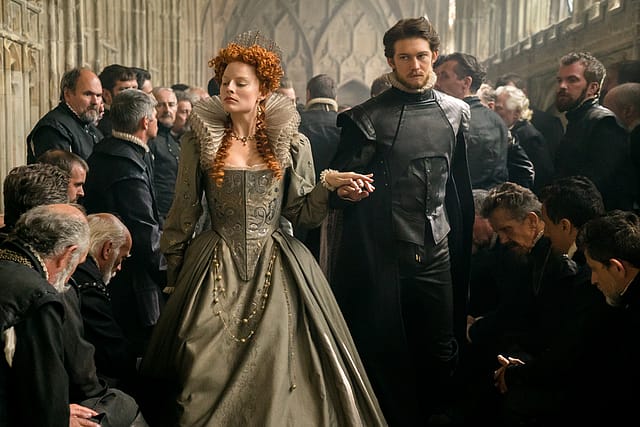Mary Queen of Scots Movie Review

In this film, Religion, Monarchy and Nationalism in the Kingdoms of Scotland and England in the 16th Century is looked at through the perspectives of two women. They are related to each other, but entirely different as personalities. Both women see themselves as trapped on a treacherous slope, designed and sustained by men. The gradient on this slippery incline of political power is set by men, and altered by them, according to the vulnerability that they see in the women who wield kingdoms inherited from male ancestors. Mary is the only surviving legitimate child of James V of Scotland, and Elizabeth is the daughter of the infamous Henry VIII. She acceded to the throne in 1558.
The conflict between these two powerful and headstrong women monarchs have been the subject of books and films before, but this film is a feminist retelling. Though it takes the occasional liberty with received historical information, what is undeniably true is its depiction of how both Queens were burdened by their respective reproductive systems. They are under pressure to produce an heir from the moment that they ascend the throne, something a new King would never have to do. To have a child, they need to get married to an appropriate consort to whom (a) they are attracted and (b) from whom they do not fear acts of sedition; like attempts to usurp power. It is a treacherous balancing act, added on to destroy women rulers, and bring back men to the centre of power, legitimately, or otherwise.
2025 In Review
12 Dec 2025 - Vol 04 | Issue 51
Words and scenes in retrospect
The film cuts between Scotland and England, and shows both Queens, each surrounded by a posse of aggressive and blood thirsty men. The only other women in the film are the ladies in waiting, their lives totally dependent on the survival of their Queens. Pregnancy is perceived as power, and, at first, this battle is 'won' by Mary, who produces an heir from a husband she grows to despise and fear. Elizabeth, in England, meanwhile, is barren, and though this biological state makes her dreadfully unhappy as an individual, it is perhaps the one factor that allows her to survive. By not marrying and not having a child, she staves off competition, assassination, revolt, and even, perhaps, execution.
It is a convincing interpretation on the political intrigue in England and Scotland by director Josie Rourke. The feminist binary included, adds to the religious one, and it becomes clear as the film's plot develops that the Protestant Elizabeth can help her Catholic cousin Mary survive, only if her 'sister', as she calls her, remains in Scotland. Should Mary be forced to leave her realm and seek refuge in England, Elizabeth will not be able to protect this passionate monarch. Her own throne would be in jeopardy, as her noblemen would fear Catholic revivalism in England.
A number of cinematic aspects are striking in 'Mary Queen of Scots', and they turn the movie into an engrossing watch. One is the ambience of dread created by the foreboding sets indoor, and the windswept takes of Scottish gloom in the sequences outdoor. The other is the ever present connection between sex, most of it of a rough kind, and death. Sex has no relationship to love in the film, and is always depicted as an instrument of violence that men use over women who hold political power over them. Perhaps it is an attempt to negate that power. Whatever it is, in a film of atmospherics the idea holds you, never mind questions on its interpretation of history.
Saoirse Ronan as Mary, and Margot Robbie as Elizabeth, both under make-up to get rid of their good looks, give us skilled performances, even though their accents may not be perfect in English, Scottish or French. 'Mary Queen of Scots' is no classic, but it is certainly a good watch.
